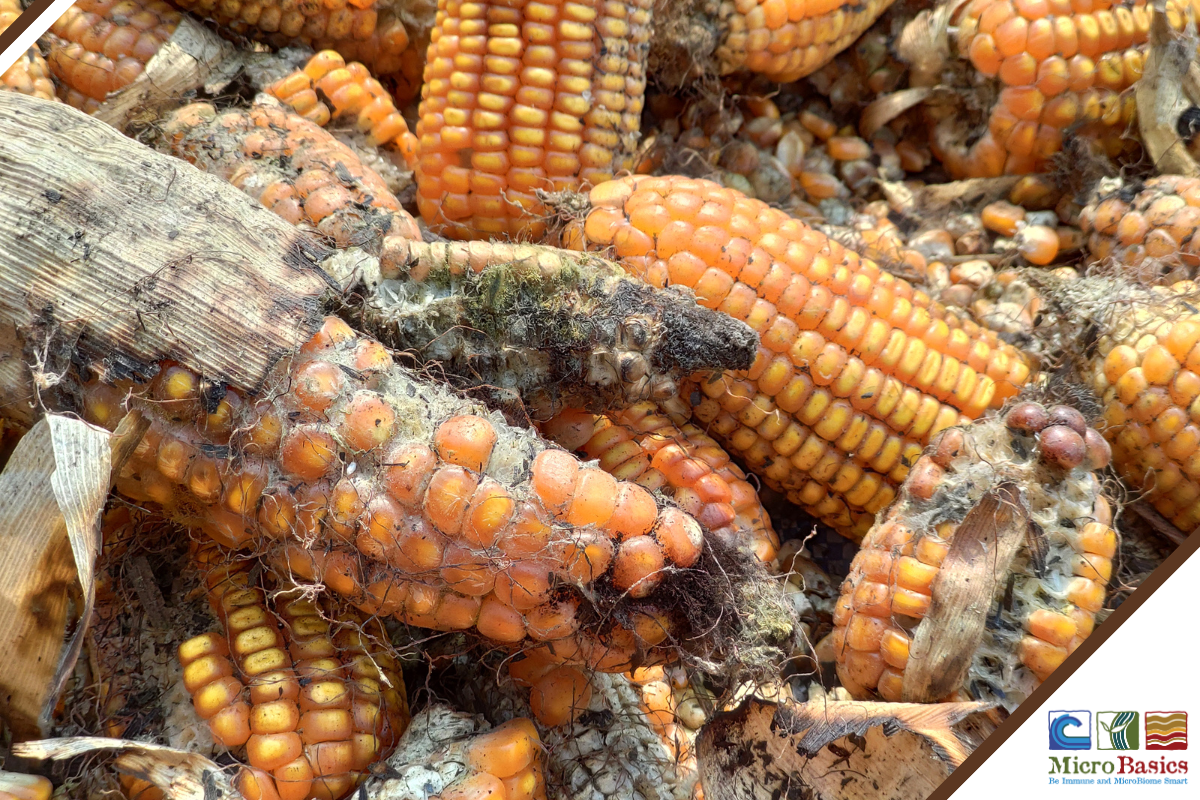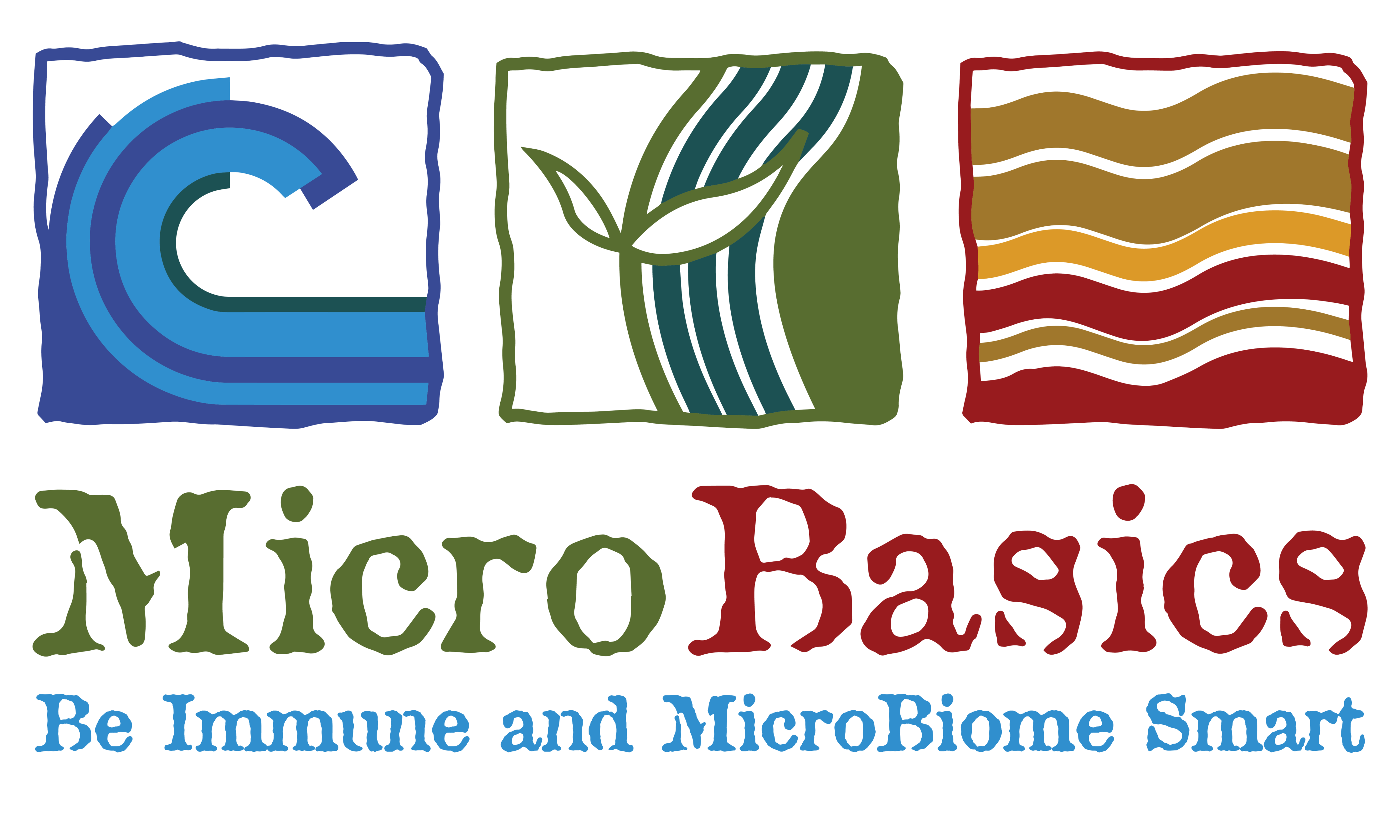
Managing Biotoxins - Aflatoxin
Aflatoxins are extremely toxic to both livestock and people. Even when fed at lower than lethal levels, aflatoxins can seriously impair animal health and productivity.
When crops are grown under stressful conditions. The potential for aflatoxin contamination increases. Aflatoxins are poisonous by-products of some species of Aspergillus fungi. The most common aflatoxins are B1 , B2, G1, and G2. Contaminated grains, grain byproducts, and corn silage are the most common sources of aflatoxins in livestock production.
Symptoms
All species of animals have shown some degree of susceptibility. Young animals are more susceptible to the effects of aflatoxins than mature animals, and cattle are more susceptible than sheep.
Feed refusal, reduced growth rate, decreased milk production, and decreased feed efficiency are the most predominant signs of chronic aflatoxin poisoning. Additionally, weight loss, listlessness, rough hair coat, and mild diarrhea may occur. Anemia along with bruises and subcutaneous hemorrhage are symptoms of aflatoxicosis. Reproductive efficiency may be impaired, including abnormal estrous cycles and abortions. Other symptoms may include impaired immune response and rectal prolapse. In dairy cattle aflatoxin metabolites appear in the milk before other symptoms develop.
Diagnosis
The liver is the major target organ when it comes to aflatoxin contamination. In acute cases, liver damage can lead to reduced clotting factor synthesis and widespread hemorrhages.
Necropsy will show the liver to be pale tan, yellow or orange. Hepatic fibrosis and edema of the gallbladder may also be observed. Microscopically the liver is enlarged and may show fatty accumulations and centrilobular necrosis and hemorrhage.
- Animal clinical signs
- Serum biochemical analysis, CBC, and coagulation testing
- Postmortem examination
- Chemical analysis of feed stuffs
Human Health
Aflatoxins adversely affect birds, pets, livestock, rodents, fish, and humans. Most countries have regulatory limits of aflatoxins in animal feeds, human food, and milk. Aflatoxins are mutagenic, carcinogenic, teratogenic, immunosuppressive, and target the liver. Adverse effects from liver damage can cause poor production, food residues, and death.
In ruminants, aflatoxins are metabolized by the liver and excreted in bile. Aflatoxin B1 is the most potent mycotoxin (toxic substance produced by mold). Aflatoxin B1 increases protein requirements and is a potent cancer-causing agent. When large amounts of aflatoxin B1 are consumed the metabolite M1 appears in milk withing 12 hours. M1 is just as toxic as B1 but research suggests it is not as carcinogenic or mutagenic as B1. Loads of milk testing higher than 0.5 ppb of M1 aflatoxin are rejected by milk processors and do not make it into the human food web.
Prevention
Contaminated feeds can be avoided by monitoring feedstuffs for aflatoxin content,
- Purchase feed from reputable companies that properly monitor their feed products.
- Don’t buy poor quality feed ingredients. A good buy may be quite expensive if it contains aflatoxin.
- Store feed at proper moisture levels.
- Keep storage bins, delivery trucks, and other equipment free of caked on feed stuffs.
- Minimize dust accumulation in milling and mixing areas.
- Check feed storage bins for leaks.
- Effectively manage rodents and insects.
Management
When dealing with contaminated feeds keep the following points in mind.
- The level of aflatoxin an animal can tolerate depends on age and sex of the animal, health status, and farm management.
- In a perfect world the ideal feeding level of mycotoxins is 0 parts per billion (ppb).
- Do not exceed 20 ppb aflatoxin in the total ration of lactating cows to avoid contamination of milk.
- Do not feed calves milk from cows fed a ration in excess of 20 ppb aflatoxin.
- Aflatoxin levels can increase if grain is stored improperly.
The FDA Center for Veterinary Medicine “Action” levels for aflatoxin in feed grain.
|
Action Level (ppb) |
Animal Class |
|
20 |
Dairy Young Stock Young Poultry |
|
100 |
Breeding Cattle Breeding Swine Mature Poultry |
|
200 |
Finishing Swine (100 lbs. or greater) |
|
300 |
Finishing Cattle |
Treatment
Aflatoxicosis is typically a herd issue rather than an individual animal problem. If contamination is suspected, try to identify the source, and eliminate it immediately. The presence of aflatoxins binds vitamins and interferes with protein synthesis, increasing these nutrients in the ration may be beneficial. Injectable trace minerals may provide a positive antioxidant response during an aflatoxin challenge.
Including an adsorbent in the ration, a clay- or yeast-based product is a cost affective way to battle aflatoxin contamination. These adsorbents work by adhering to aflatoxins directly. Researchers from Texas A&M University reported a 71% reduction in milk aflatoxin concentration when an adsorbent is added into the diet. Other studies have found an increase in milk yield and milk component production when adsorbents were included in the ration.
Reduced milk aflatoxin levels and increased performance are not the only benefits of supplementing with adsorbents. Studies have shown a reduction in liver inflammation and increased indicators of immune health in blood when a clay adsorbent was added into the diet.
Potential rejection of milk loads is certainly the largest area of concern when discussing aflatoxins. However, when we fully understand the problem of mycotoxin contamination, we need to understand that the harmful effects go well beyond the milk tank. Solutions to the aflatoxin problem must also address immune function.
Intercept and Intercept FEND support animal health during toxin challenges.
- P.S. (Immune Positioning System) a blend of biological polysaccharides and polypeptides.
- Adsorbents (Yeast Cell Wall, and Montmorillonite Clay).
- Yucca schidigera modifies rumen fermentation.
- Dietary nucleotides increase the maturity and growth of normal enterocytes.
- Live Yeast
- Yeast Culture
- Prebiotics
- Probiotics
- Postbiotics
For more information on managing toxin challenges on your farm, please reach out to us at service@microbasics.com
Written by: Mariah Gull, M.S.
